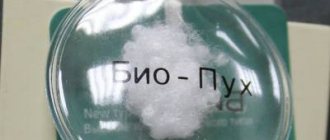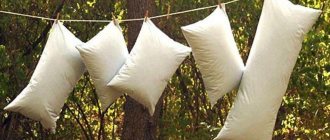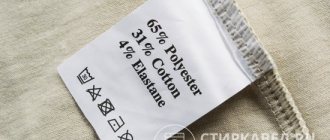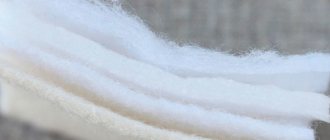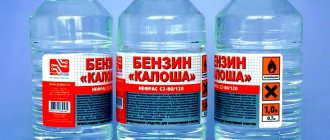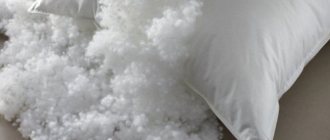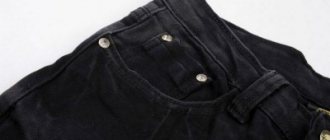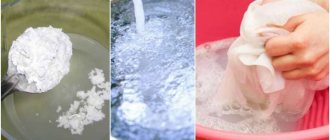Is it possible to wash a wool blanket in a washing machine? The method for restoring purity to a product depends entirely on its physical characteristics. Therefore, having decided to refresh their favorite blanket or savior from night monsters, zealous housewives first find out, using the tag on the product, the permissible and recommended method of influencing the item by the manufacturer.
- Features and types of wool blankets
- Proper care
- Preparing for washing
- Wash by hand
- We use a washing machine
- Superficial cleaning
- Drying the product
- Expert recommendations
Features and types of wool blankets
You can tell what type of blanket you are, even if the tag is no longer on it.
Types of wool blankets
Most products belong to one of the following groups:
- Solid woven. The owner may not even be aware that such a blanket is made of wool, since it looks more like a piece of dense material. If the composition of the threads and their percentage cannot be determined using the label, the presence of wool in the fabric will be indicated by the product’s ability to warm well without the greenhouse effect that acrylic or polyamide items have. And if you tear out a few threads from it and set it on fire, the ashes will begin to crumble, spreading the aroma of a burnt chicken feather.
- Quilted. This category includes blankets with a waffle-like surface or with stitching that forms a raised and intricate pattern. Thanks to the thread separators, the inner contents of the winter blanket remain evenly distributed throughout it. For any type of wool: from merino, llama, sheep, camel, the method of hygienic processing of things is the same.
- Fur. They are easily recognizable due to their fluffy surface.
Selecting a detergent
To wash woolen items, you need to use special detergents containing lanolin. This substance preserves the structure of fabric fibers from mechanical damage. Here are some products designed to clean wool fabrics:
- “Vorsinka” is produced in the Russian Federation and is used for both machine and hand washing, is produced in the form of a liquid and is inexpensive.
- Wool Care from Miele allows you to wash woolen items even in cold water and prevents fibers from pilling.
- “Weasel” from Henkel is a liquid that provides not only freshness, but also softness to things. The product rinses well and leaves no residue.
- Domal is a cleansing balm containing lanolin.
- AlmaWin - suitable for washing wool and other delicate fabrics. This concentrated product is made on a plant basis.
Caring for a sheep's wool blanket should be regular and gentle. Changing your duvet cover in a timely manner will help reduce the number of times you wash the product. Woolen fabric should not be ironed or washed with universal washing powders. By following these simple rules, you can use your favorite item for many years with comfort and pleasure.
Proper care
The peculiarity of the wool component of blankets is that in order to maintain a fresh aroma they must be systematically ventilated, without exposing them to direct sunlight. In winter, these things should be taken out into the cold at least once during the day, giving the hairs in the product a slight aggressive shake, which is useful for their microscopic scales. But wet treatment is only permissible for some types of bedspreads.
- Fur options are not washable in water at all. Because the product will no longer be fluffy, the fibers will gather in piles and the front surface of the thing will turn into a “clearing” with stumps of “dreadlocks” cut off at the root. All that can be done for hygienic purposes with such a thing is to carry out superficial cleaning yourself or entrust it to a dry cleaner with a very good reputation.
Are you unplugging your washing machine?Oh yes! No
- Quilted ones should not be washed either, especially in a machine. This is fraught with the loss of two things in your everyday life: a good, expensive blanket and, in fact, the machine itself, if it tries to do anything with the product that has accumulated moisture. If it is so saturated with all sorts of odors that you are already thinking about throwing it away, and there is room to tinker with such a task, try to bring it into a divine state somewhere close to an uninterrupted source of water and with the opportunity to spread thick polyethylene on the ground for laying out a blanket.
- One-piece fabrics can be washed by following a number of recommendations. It is rational to resort to the help of a machine only if the thing is so thin that after moistening it will not turn out to be an unbearable burden for the machine, and the latter has a mode of delicate influence on things.
If there is a need to remove a stain, it is better to try to clean only the problem area, rather than subjecting the entire product to wet treatment.
Blanket
Dry cleaning method
Dry cleaning means cleaning the product using a soft bristle brush or foam cleaning. Light stains can be cleaned by lightly rubbing them with a brush.
If this method does not help, you need to dilute a small amount of wool product in water and foam it . Then apply to the stain and scrub using a brush.
Wipe with a clean damp cloth. After drying, the pile can be combed to restore its lush volume.
When you cannot get rid of the dirt, you need to wash the bedspread or turn to dry cleaning services.
Preparing for washing
It is more profitable to tidy up blankets on a hot summer day - this way they will dry faster even without using the wringing capabilities of the machine.
- Experienced housewives wash such items with specialized products for cashmere or use shampoo for normal hair. It is better not to use ordinary gels, powders, especially laundry soap, if you want the wool to remain soft and not start to smell unpleasant or itchy. It is not worth making a strong soap solution - it is difficult to wash out the foam, in any case, and if there is an excess of it, the residue will settle on the wool and reduce the quality.
- Washing and rinsing require water at the same temperature. Therefore, if it is not possible to ensure heating of a sufficient amount for rinsing, then you should not use very warm water for the main process. Maybe just a little bit. But in any case, it should not exceed 35 degrees - unless you want to be surprised by a change in the size of the dried item and an increase in its degree of causticity.
- Light-colored items must first be shaken out well, so that moistened dust and possible particles of some pigments, for example, from chip crumbs, do not cause difficult-to-remove stains on the fabric.
wool_blankets_
tomatex_ua
vikaanna50716
sukno.by
Dry cleaning – price issue
In cases where it is impossible to remove dirt on your own, there is a fear of ruining an expensive item, a blanket of such a size that it is impossible to wash and dry it yourself - dry cleaning services will provide help.
The positive aspects will be:
- consultation of specialists;
- professional cleaning;
- mobile service - the blanket will be taken to the dry cleaner directly from your home.
The cost of cleaning a 1.5-2-bed blanket in a dry cleaner will be from 1200 to 1600 rubles. Pickup is paid additionally and can cost up to 1000 rubles.
Wash by hand
This is the best option for the blanket itself, but a difficult test for the owner. The most difficult thing is to arrange a full-fledged font for a thick quilted blanket, because:
- it becomes heavier by several orders of magnitude, and even a small area of it becomes almost impossible to lift when heavily moistened;
- washing must be carried out in such a way as not to damage the arrangement of layers of wool inside the cassette cells.
In order not to strain their backs and be left with a quilted blanket after it has been wet processed, savvy housewives wash the product outside, providing film protection from contact with the ground.
Are you using citric acid?
Oh yes! No
Washing technology:
- Before spreading the item, place a reliable stick made of material that will not discolor the item after contact with water in the middle of a piece of polyethylene. In the future, the “rod” will help dry the blanket faster.
- After wetting the product over the entire surface, it is doused with a soap solution, and then they walk barefoot on top, creating a gentle mechanical effect on all layers of filler. This treatment does not affect the arrangement of layers and does not threaten wool rolling or shifting.
- After the promenade, the dirt and remaining foam are washed out with water from a hose, waiting for the streams of soapy liquid to change to clear.
- Having finished with this part, the blanket is rolled up, gently pressing to expel the water.
- Having unfolded the product, the stick under it is raised ten centimeters and held at this level with the help of bricks or other improvised means placed under both ends of the “horizontal bar”. This technique allows you to speed up the escape of moisture. As the item dries, the stick is raised higher and higher.
Washing a thin blanket also requires serious physical effort due to the significantly increasing weight of the product. However, you don’t need to rub it hard - the soap solution will remove fat and dirt accumulations, even if you just gently squeeze the item around the entire perimeter.
Army wool blanket
How to dry properly
This cannot be done in a washing machine. Place the blanket on a flat, horizontal surface at room temperature. Too warm air will dry out the fibers, so do not leave the item near a radiator or directly under the sun.
Don't let the blanket dry unevenly or leave the inside damp. As a result, it may become moldy and fungus will begin to develop. To avoid this, turn the product over periodically.
You cannot dry it vertically, because this way the wet fibers will stretch and the item will become deformed.
Tip: wool bedding should be regularly aired outside in dry weather to prevent dust mites from infesting it.
We use a washing machine
This option is suitable only for thin blankets - provided that the weave of the threads is tight and the product will not warp under gentle processing and gentle spinning.
Things to remember:
- You can only add things with the same fabric composition to the blanket.
- A temperature within 30 0C is quite sufficient. It is not worth setting higher values so that the temperature difference between the washing and rinsing water does not make the item prickly.
- As with hand washing, do not use fabric softeners on woolen items.
Removing stains
It is better to remove dirt from the blanket before washing, since the detergent may not be able to remove it. Stains from wool must be removed taking into account their origin:
- Fat, ballpoint pen. Sprinkle fresh stains with talcum powder or tooth powder and leave for 3-4 hours. Old - treat with alcohol.
- Milk. Contamination can only be removed with cold water. Do not use hot, as the animal protein will coagulate and it will be impossible to remove it.
- Blood. If the stain is fresh, it can be washed off well under running cold water. Old dirt must first be treated with ammonia, allowed to sit, and then rinsed under the tap.
- Chocolate. It is easily removed with a salt solution.
- Oil paint. Lubricate the stain with purified gasoline or turpentine and leave for 15-20 minutes.
- Coffee. Washable with laundry soap and dish gel. A homemade mixture of dish soap, glycerin and water gives good results. Mix the components in a ratio of 1:1:8, moisten the stain with white vinegar, and then apply the prepared product. Leave for 10-15 minutes, gently rub with a cotton pad, and rinse.
- Fruits and berries. A solution of water and citric acid helps with stains.
Expert recommendations
To ensure that the item continues to please you with its appearance and service, follow a number of easy-to-follow recommendations. More details:
- Do not soak the blanket for a long time - a quarter of an hour is enough.
- Make sure that air enters it from all sides. With heavy options, you can use a horizontal bar and spacers for the sides.
- It is better to add too little cleaning agent than to add too much.
Often, washing a wool blanket seems like a feat that not everyone is capable of. However, if you know how to tackle this matter correctly, then anything can be put in order even without resorting to the help of professional “cleaners”.
Basic prohibitions when using
Sheep blankets and rugs are very light and do not take up much space in the apartment. It can last for many years if you follow basic care instructions. Among them, you should definitely know what you definitely shouldn’t do with wool:
- Expose to hot temperatures. Washing in hot water will instantly damage the product.
- Wool should not be ironed for the same reason. The fibers of the material will immediately change their texture and change their properties.
- The material does not tolerate intense mechanical stress. Therefore, active washing, spinning and excessive rinsing with twisting movements are strictly prohibited.
- Bleaching. These accessories must not be cleaned with any type of bleach.
Before you begin describing the washing process itself, you should familiarize yourself with the basic recommendations for caring for wool products.
Can a wool blanket be washed?
With proper care, periodic drying, airing and frequent changing of the duvet cover, the need for washing may not arise for a long time. As with any other fabric product, this process cannot be avoided. Natural filler absorbs moisture well; over time, an unpleasant odor may appear. To avoid this situation, you should deep wash your bedding.
In the case of a quilted blanket, there should be no problems with washing, but if the fabric is solid, then you should definitely consider the label with special instructions from the manufacturer.



